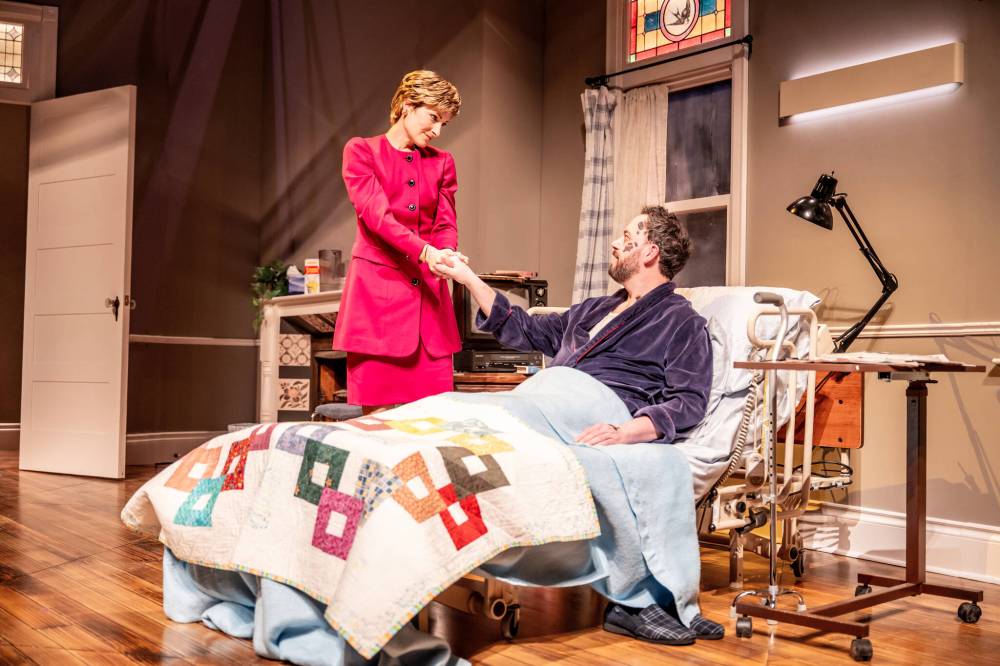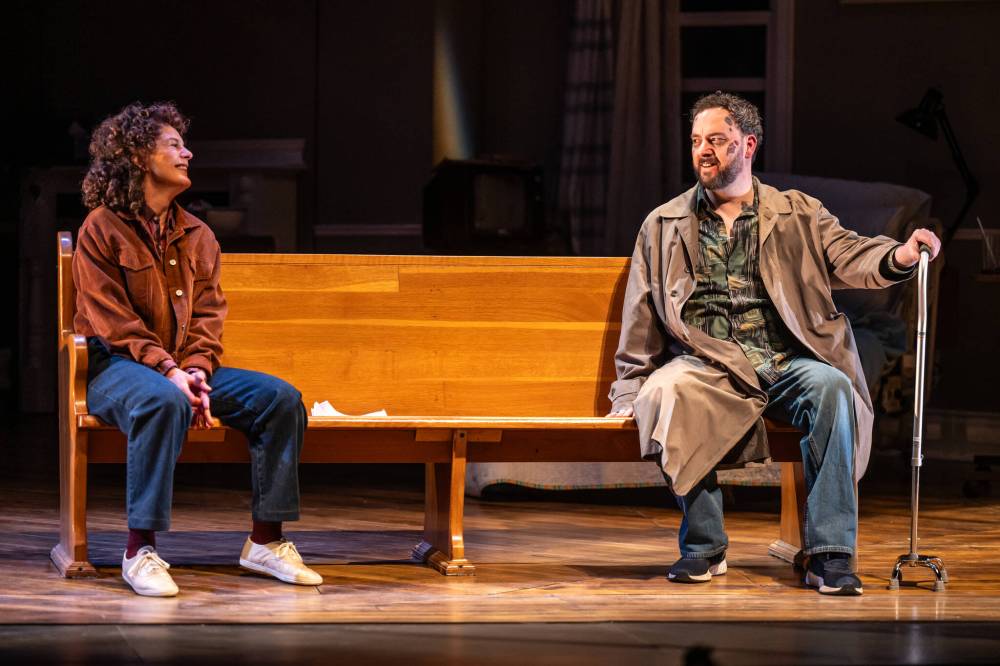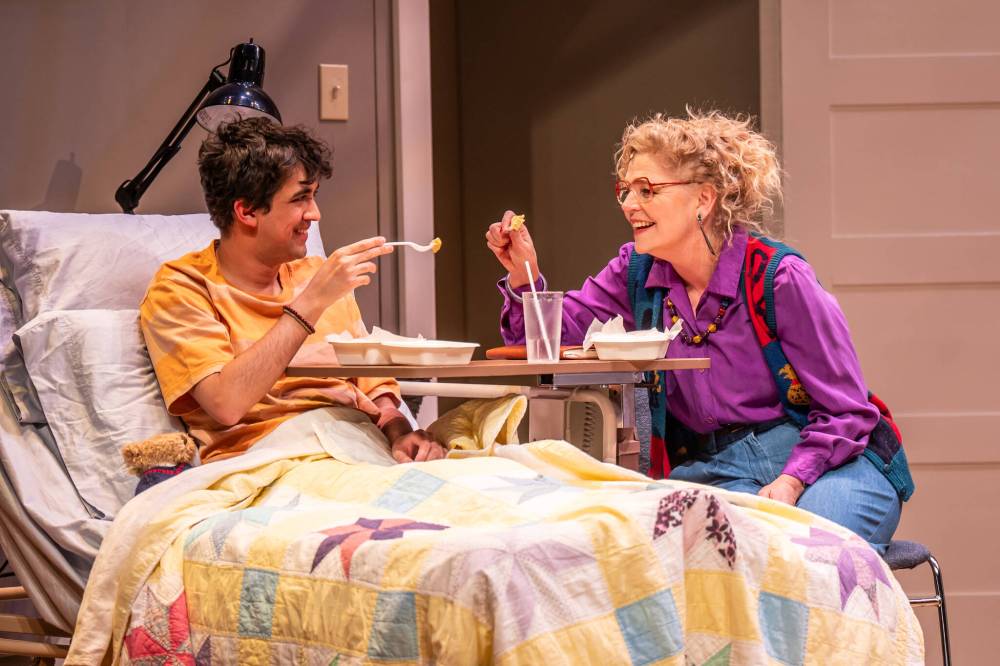Princess and the patients
Casey and Diana features breathtaking moments and dark humour
Advertisement
Read this article for free:
or
Already have an account? Log in here »
To continue reading, please subscribe:
Monthly Digital Subscription
$1 per week for 24 weeks*
- Enjoy unlimited reading on winnipegfreepress.com
- Read the E-Edition, our digital replica newspaper
- Access News Break, our award-winning app
- Play interactive puzzles
*Billed as $4.00 plus GST every four weeks. After 24 weeks, price increases to the regular rate of $19.00 plus GST every four weeks. Offer available to new and qualified returning subscribers only. Cancel any time.
Monthly Digital Subscription
$4.75/week*
- Enjoy unlimited reading on winnipegfreepress.com
- Read the E-Edition, our digital replica newspaper
- Access News Break, our award-winning app
- Play interactive puzzles
*Billed as $19 plus GST every four weeks. Cancel any time.
To continue reading, please subscribe:
Add Free Press access to your Brandon Sun subscription for only an additional
$1 for the first 4 weeks*
*Your next subscription payment will increase by $1.00 and you will be charged $16.99 plus GST for four weeks. After four weeks, your payment will increase to $23.99 plus GST every four weeks.
Read unlimited articles for free today:
or
Already have an account? Log in here »
Hey there, time traveller!
This article was published 21/03/2025 (204 days ago), so information in it may no longer be current.
The AIDS epidemic that began ravaging the LGBTTQ+ community in the 1980s spawned a tear-soaked legacy of plays, films and books, including Angels in America, Philadelphia and Holding the Man, among so many others.
Award-winning Canadian playwright Nick Green’s moving Casey and Diana is part of that sober lineage, a testament to the power of hope for all those living in the face of impending death.
The Royal Manitoba Theatre Centre’s co-production with Hamilton’s Theatre Aquarius, sensitively directed by Andrew Kushnir, opened Thursday at the John Hirsch Mainstage. The story is inspired by the true-life tale of Princess Diana’s groundbreaking 1991 visit to Toronto’s Casey House, Canada’s first stand-alone treatment facility for people living with HIV/AIDS; the way the princess unflinchingly held the hands of the infirm during the height of the crisis smashed barriers in how these patients were treated and viewed in society.

DAHLIA KATZ PHOTO
Catherine Wreford as Princess Diana (left) and Gregory Prest as Thomas enact the late royal’s groundbreaking visit to HIV/AIDs patients in Toronto.
However, the two-act drama, which premièred at the Stratford Festival in 2023, is also about the wounds of family dysfunction and the way communities of strangers can bring solace to deeply scarred souls through newly forged relationships.
The 150-minute production (including an intermission) opens as a hazy, hallucinogenic dream in which the dying protagonist Thomas (Gregory Prest) recounts to an empathic Princess Diana (Catherine Wreford) the story of how he and his estranged sister Pauline (Alicia Johnston) woke up at 5 a.m. to watch her wedding to Prince Charles in 1981.
This immediately sets the tone for Green’s deft interweaving of fantasy and reality, seamlessly directed by Kushir; Thomas’s awe at the prospect of meeting his heroine is juxtaposed against a cruel backdrop of syringes and gaping Sarcoma lesions, which increasingly cover his skin.
In his RMTC debut, the multi-Dora Award-winning Prest’s harrowing delivery propels the narrative forward with his gallows humour, dry wit and insightful zingers such as “You have to laugh to keep from dying.”
He has exactly seven days — measured in hours and minutes — to prepare for the princess’s arrival, which fuels his resilience as he spurs on Casey House’s residents to follow suit.
The Winnipeg-based Wreford achieves the near impossible: portraying the iconic royal figure who becomes a calm beacon of hope and comfort for Thomas, while stamping her willowy character squarely as her own. No, her British accent isn’t quite how Diana spoke, but it really doesn’t matter, as she creates a lingua franca of compassion.
The Broadway star’s own publicly documented journey of living with terminal brain cancer since 2013 can’t but help infuse her performance with raw humanity, underscored by a wellspring of strength.

DAHLIA KATZ PHOTO
The reconnection of estranged siblings Pauline, played by Alicia Johnston, and Thomas is blustery and tightly coiled.
Another local treasure, the incomparable Sharon Bajer, is pitch-perfect as do-gooder hospice volunteer Marjorie — who has lost a friend to AIDS — clipping along in polyester pants and sensible shoes as she seeks to exorcise her own grief by tending to the sick. Bajer’s nuanced portrayal avoids caricature as she bends and breaks the rules to assuage her own helplessness.
The equally impressive Noah Beemer as Thomas’s new roommate, Andre, captures the increasing panic and rage of knowing the end is near as he flails against Thomas’s arsenal of jokes by “pretending” to be dead, or self-soothes with a “gay breakfast” takeout from Frankie’s Diner, spirited in by Marjorie.
One of the play’s most potent scenes comes after he steels his courage to call his estranged mother, “to let someone know I love where I am.”
Realizing her phone line is out of service, Andre’s loneliness rings with existential grief of the ages.
Gloria Mampuya’s rock-steady nurse Vera tirelessly administers to Thomas and Andre’s emotional and physical needs, only later erupting into her own monologue of sorrow as she reveals the crosses she bears as a caregiver.
Thomas’s sister Pauline, deep into therapy, returns to make amends for abandoning her brother out of fear of his AIDS diagnosis; at times Johnston’s delivery is too blustery and tightly coiled, like her 1980s poodle perm, making her eventual reunion with her sibling not wholly convincing.
Joshua Quinlan’s set, which re-creates Casey House, features a raked stage that thrusts the intimate story closer to the audience while literally and metaphorically putting its characters perilously off-balance. Stained-glass panes, as well as a large proscenium arch and ceiling line effectively lit by Logan Raja Cracknell, frame the action while evoking the sense that the “Almighty whatever,” as per Thomas, is nearby.

DAHLIA KATZ PHOTO
Noah Beemer (lef), as Andre, and Sharon Bajer, as Marjorie, deliver impressive performances.
Composer/sound designer Ashely Au’s less-is-more score, with its gentle droning effects, is particularly effective whenever “the people’s princess” silently takes the stage to comfort Thomas during his darkest moments.
One final image is a stunner (no spoilers here), and more of these highly theatrical, breathtaking moments, such as when Diana sheds her hot pink suit to suddenly re-emerge in her famous black taffeta gown, would effectively have countered Thomas’s, at times, overly glib wise-cracks, likely eliciting even more sniffles and sobs from the audience than were heard during opening night.
But still, when the immortal Diana — herself now on the other side — assures the star-struck Thomas, “We’re all people, aren’t we?” her words of wisdom are a clarion call for compassion to all those still engulfed by the flames of fear.
holly.harris@shaw.ca


